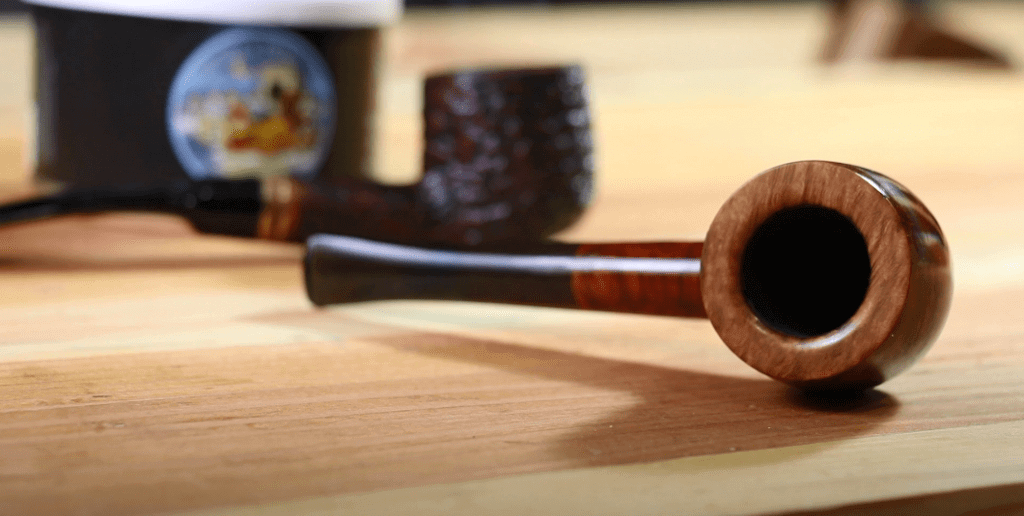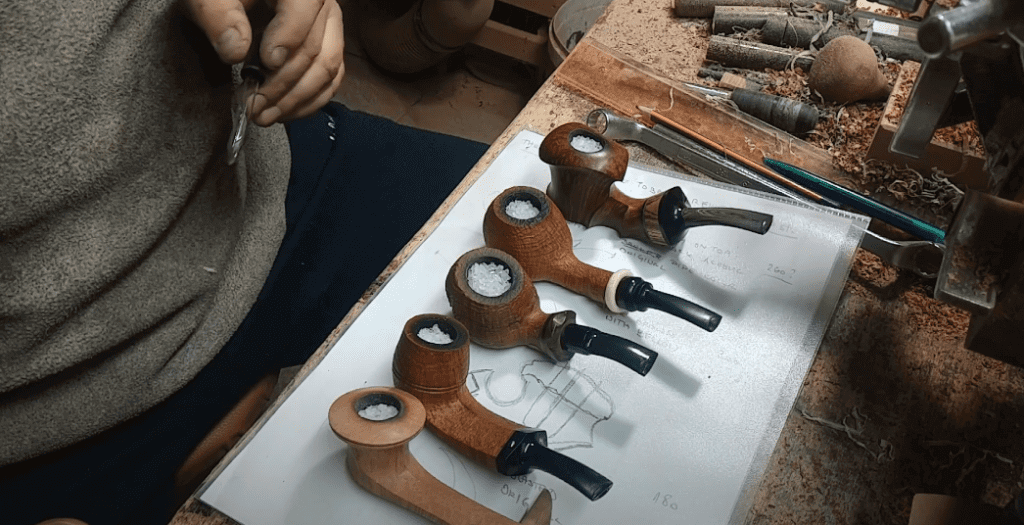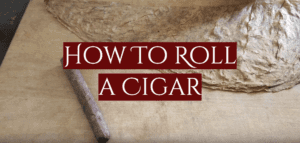The traditional smoker can determine whether their tobacco pipe needs to be cleaned with a single blow. Although cleaning isn’t on the top of most smokers’ to-do lists, cleaning your tobacco pipe takes just a few minutes of effort that can make a smoking session smoother.
The primary aim is to get rid of any pollutants that have accumulated in the pipe. So, here are a few fast cleaning tips you may use if your pipe starts to stink.
Things you’ll need to clean your pipe:
- Soft or bristle pipe cleaners;
- Cotton swabs;
- Paper towels;
- Soft alcohol or liquor, instead of rubbing alcohol;
- Pipe reamer;
Table of Contents
How frequently should you clean a pipe?
Cleaning your pipe on a regular basis will result in a smoother smoke. This will extend the life of your pipe beyond its usual lifespan. Your favorite liquor also has a pleasant aftertaste that will make even someone who is using a pipe for the first time love this method of smoking.
Tips before cleaning a tobacco pipe:
- Separate the pipe only when it is cold;
- Prepare a large surface area;
- Always use a purpose-made cork knocker to empty the bowl;
- Keep a dustbin nearby to throw all the trash away;
Daily care routine
- Clean the rim. Once the pipe has cooled, you can use your saliva on the tip of a finger to rub any excess tar off the rim. This will keep it clean and reduce the need for deeper cleans in the future;
- Clean the stem and shank. Slip a cleaner through the pipe’s stem from the bit to the draught hole for the most basic daily clean after smoking. Move the cleaner back and forth before taking it out again. You may do this using a gentle pipe cleaner. After a few bowls, you may wish to make the first pass with a bristled one. Blowing into the pipe to clear any debris that may have blocked it is not a bad idea;
- Clean the bowl. To clear any loose particles, just use a blunt blade or the spoon extension of the pipe tool. Rather of scraping the inside, gently brush it and dump any char into an ashtray;
Weekly care routine
- Clean the rime. Rub the rim with a cotton swab wet in saliva or water for a deeper clean. Most tar stains should be removed, revealing the wood underneath;
- Clean the shank. Begin by cleaning the slot and shank interiors with an alcohol-soaked brush after the pipe has been disassembled. After that, use a dry soft cleaner to wipe any remaining alcohol or debris. To prevent any extra alcohol from running out and damaging the finish on the rim, refill the bowl with a paper towel;
- Clean the stem. Run an alcohol-soaked bristles pipe cleaner from one end to the other through the stem. Going all the way through ensures that no filth is left behind. To clean any debris and dry the stem’s inside, repeat the procedure using a dry, soft cleaner;
- Clean the bowl. After several days of usage, give the bowl a thorough clean to get rid of any leftover residue. Bend a pipe cleaner in half and immerse it in alcohol after gently removing any particles. Instead of rubbing alcohol, consider using liquor. As previously said, it will be gentler on the pipe and may give a nice taste in subsequent bowls. Simply brush the cleaner around the inside of the bowl until it is totally black. If required, repeat or use a swab for a more thorough clean;
Monthly care routine
Clean the rim. When cleaning, avoid using rubbing alcohol that is too powerful. Because the rim is constructed of polished wood, it may be damaged by rubbing or grain alcohol. If you have a particularly heavy coating of char that has built up over time due to negligence, gently scrape the rim with a dull blade. However, use extreme caution not to harm the finish by scraping too hard.
Clean the shank. To completely scrape the inside, start with a shank brush or bristle cleaner dipped in alcohol. When you’re satisfied, clean it using a wet swab and a dry pipe cleaner, as described above.
Clean the stem. Begin by scrubbing the inside with a metal shank brush soaked with alcohol once again. Run a wet bristled cleaner through the pipe’s stem as stated in the regular process after you’re pleased. Older vulcanite stems have been known to oxidize, turning the stems green. Vulcanite stems may be turned black again with some elbow grease. To do this, immerse the stems in boiling water with a significant quantity of OxiClean powder. If the stem has any brand marks, you may wish to use.
Vaseline to keep them from flaking off. If you’re fortunate, soaking the pipe stems overnight will eliminate any signs of oxidation. Alternatively, you may use a lot of bleach lotion and massage the stems till they become black again. While it may take up to 30 minutes to see effects, it is definitely worth the time and effort.
Ream the bowl. You may wish to ream the inside of your pipe’s bowl if it has grown an extra layer of cake. Otherwise, the pipe’s desired sweetness from the sugars may be lost, and harsh or sour tastes may result. Traditionally, a dull knife was used to do this. Alternatively, use a pipe reamer, which is a handy and simple instrument that can automatically change the width based on the size of the bowl.
Simply place the reamer in the bowl and spin while gently pushing. Keep in mind that the goal is to eliminate extra cake, so don’t use too much pressure. Furthermore, pushing too hard on the inside may cause harm. Twist a few times clockwise and then a few times in the other way. Throw the waste from the pipe into an ashtray when finished, and repeat if required.
After you’ve reamed the bowl and knocked out any loose particles, continue cleaning it with an alcohol-soaked cleaner.
Soaking the tobacco pipe for the deepest cleansing
A deep cleaning may be accomplished by soaking the bowl in salt and alcohol. This method helps to remove any extra gunk that has built up over the years if your pipe is especially old. Begin by reaming your drill process.
Remove the stem and fill the shank to keep it from leaking. Use a cotton swab covered in cling film since it works effectively.
After that, add salt to the bowl. While any salt will do, table salt contains smaller crystals that are more difficult to remove. For the greatest results, use sea salt.
Because the bowl will expand after the alcohol is poured, fill it just below the rim. This prevents it from overflowing excessively. If required, you may add extra salt.
Then you should use liquor instead of heavy-duty rubbing alcohol. Pick a small container to control the amount poured into the bowl rather than pouring straight from the bottle. For the most precise result, some individuals even believe in utilizing pipettes or syringes.
Fill it with just enough liquor to dampen but not fully wet the salt before topping with salt up to the rim. If required, add a little more alcohol to moisten the excess salt.
Next, let the pipe sit on a stand to prevent it from tipping over during the following 24 hours. If you don’t have a stand, an egg carton may be used as a substitute.
The solution will have absorbed all of the tar and residue remaining in the bowl once the 24-hour time has passed.
Simply scrape away the alcohol and salt from the bowl with a pipe tool after it has fully saturated. Fill the dish with additional alcohol to rinse away any leftovers.
Stir the liquor in the bowl using the pipe tool. By putting your thumb over the rim, you may also shake it. Pour it out and wipe the inside of the bowl down with a paper towel before allowing it to dry for another 24 hours.
Related Reviews:
How to clean tobacco pipes made of different materials
Glass pipe cleaning
You must first remove any loose debris left in the pipe. Turn the pipe upside down and slowly tap it to remove big particles. Scrape the inside with a paperclip.
It is now time to begin cleaning. Place the pipe in a Tupperware container or a plastic bag. Pour some rubbing alcohol or other cleaning solution into the Tupperware container or Ziploc bag and then fully immerse the glass pipe.
It’s essential to remember that you may be using something else than rubbing alcohol as a cleaning agent. If that’s the case, just repeat the instructions. Commercial cleansers such as Formula 420 and household cleaning products such as baking soda and vinegar.
Add salt after the alcohol has been added. The alcohol works as a disinfectant, while the salt acts as an abrasive, assisting in the cleaning of your smoking pipe.
Toss the bag or container gently after adding the alcohol and salt. You may soak, then return and stir again, etc.
Let the pipe soak in the liquid for a few hours after it has been mixed up. If the pipe is very filthy, soak it overnight and then repeat the process.
After the pipe has been soaking for a bit, you may scrape the inside again to assist release any sticky resin. Then return it to the cleaning solution and soak it again.
After you’ve finished soaking, scraping, and shaking, you’ll need to completely rinse the solution out of your pipe. This stage may be completed using hot water. It’s also recommended since it prevents residue from adhering to the pipe when the cleaner is removed.
Lastly, if any leftover spots have to be cleaned, scrape them away using cotton swabs. Scrape any residual resin with hot water flowing over the pipe.
Silicone pipe cleaning
For the most part, silicone pipes may be cleaned using the same process as glass pipes. Silicone pipes, on the other hand, provide a number of benefits, particularly for those worried about harming their pipes: you should boil silicone pipes all day and expect a very clean pipe at the end.
Silicone is a flexible, shatter-resistant material that is excellent for people who aren’t used to working with pipes on a regular basis. Many types of silicone pipes may be disassembled, making it much simpler to clean thoroughly. Pipes made of a mix of silicone and glass are also available, providing the advantages of both materials.
Water pipe cleaning
Water pipes are made of a variety of materials, including silicone, glass, plastic, etc. Water pipes, on the other hand, will generally follow the same cleaning process as glass pipes, but there will be some variations. If there is water in the pipe, for example, you should drain it before cleaning it. They may also need to soak for extended periods since the water applied to filter smoke may have left persistent spots along the water-mark area.
Metal pipe cleaning
When cleaning metal pipes, there are a few things to keep in mind. A filter screen in metal pipes, for example, is a component that must be properly cleaned and soaked before use. Before soaking, you need to scrape off metal pipes, which tend to build up to heavier residue than other materials. You may use specialized scraping tools or even common household items like paper clips to get the job done. Use boiling water if necessary.
Wooden pipe cleaning
For the greatest experience, use a dry cleaner on a regular basis. It may be hard to determine whether a more thorough cleaning is required. But it is simple – if your smoke begins to taste salty, it’s time for a thorough clean.
It’s essential to remember that following thorough cleaning on wooden pipes, you should let them sit for a while. Let the rubbing alcohol evaporate before smoking; otherwise, you may get a less-than-pleasant taste.







Wow, it’s interesting to know that silicone san also be a good materials to use for smoking pipes. I’m interested in looking for a good glass vape rig repair services because I recently found a crack on mine. I don’t think I should use it until that’s properly sealed.
https://www.smokeandvapewa.com/